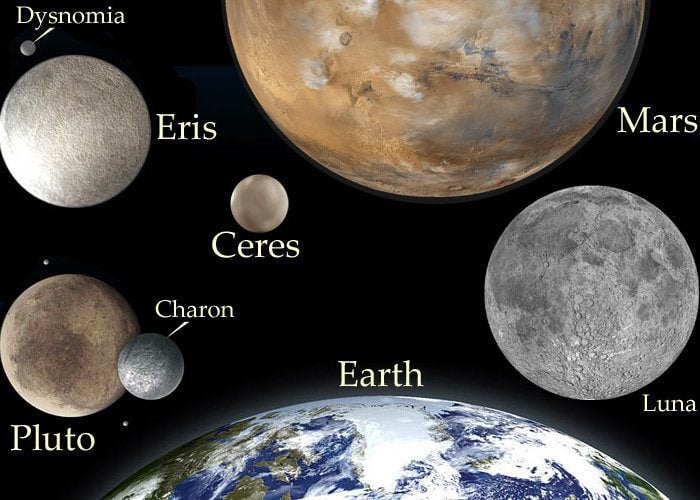



“May.” All you need to know. SunkinCiv acolyte?
This is hugh. And Ceres.
...and then the darned dwarves driving their mini-SUVs caused the ocean to evaporate.
Don’t you listen to them, Ceres!
You are just the right size!
Some people just have to mean mouth everything.
Its diameter is approximately 945 kilometers (587 miles),[6] making it the largest of the minor planets within the orbit of Neptune.
The 33rd-largest known body in the Solar System, it is the only dwarf planet within the orbit of Neptune.[c][20] Composed of rock and ice, Ceres is estimated to compose approximately one third of the mass of the entire asteroid belt.
Ceres is the only object in the asteroid belt known to be rounded by its own gravity (though detailed analysis was required to exclude 4 Vesta).
From Earth, the apparent magnitude of Ceres ranges from 6.7 to 9.3, and hence even at its brightest it is too dim to be seen with the naked eye except under extremely dark skies.
Ceres was the first asteroid to be discovered (by Giuseppe Piazzi at Palermo on 1 January 1801). It was originally considered a planet, but was reclassified as an asteroid in the 1850s after many other objects in similar orbits were discovered.
Ceres appears to be differentiated into a rocky core and an icy mantle, and may have a remnant internal ocean of liquid water under the layer of ice.[21][22]
The surface is probably a mixture of water ice and various hydrated minerals such as carbonates and clay.
In January 2014, emissions of water vapor were detected from several regions of Ceres.[23]
This was unexpected because large bodies in the asteroid belt typically do not emit vapor, a hallmark of comets.
The robotic NASA spacecraft Dawn entered orbit around Ceres on 6 March 2015.[24][25][26]
Pictures with a resolution previously unattained were taken during imaging sessions starting in January 2015 as Dawn approached Ceres, showing a cratered surface.
Two distinct bright spots (or high-albedo features) inside a crater (different from the bright spots observed in earlier Hubble images[27]) were seen in a 19 February 2015 image, leading to speculation about a possible cryovolcanic origin[28][29][30] or outgassing.[31]
On 3 March 2015, a NASA spokesperson said the spots are consistent with highly reflective materials containing ice or salts, but that cryovolcanism is unlikely.[32]
However, on 2 September 2016, NASA scientists released a paper in Science that claimed that a massive ice volcano called Ahuna Mons is the strongest evidence yet for the existence of these mysterious ice volcanoes.[33][34]
On 11 May 2015, NASA released a higher-resolution image showing that, instead of one or two spots, there are actually several.[35]
On 9 December 2015, NASA scientists reported that the bright spots on Ceres may be related to a type of salt, particularly a form of brine containing magnesium sulfate hexahydrite (MgSO4·6H2O); the spots were also found to be associated with ammonia-rich clays.[36]
In June 2016, near-infrared spectra of these bright areas were found to be consistent with a large amount of sodium carbonate (Na
2CO
3), implying that recent geologic activity was probably involved in the creation of the bright spots.[37][38][39]
In October 2015, NASA released a true color portrait of Ceres made by Dawn.[40]
In February 2017, organics were reported to have been detected on Ceres in Ernutet crater (see image).[41]
-snip-
Ceres follows an orbit between Mars and Jupiter, within the asteroid belt, with a period of 4.6 Earth years.[4]
The orbit is moderately inclined (i = 10.6° compared to 7° for Mercury and 17° for Pluto) and moderately eccentric (e = 0.08 compared to 0.09 for Mars).[4]
Sometime back I read an article that proposed that the lack of water on other planets compared to the huge amount on Earth implies that Earth may have been impacted by a Ceres-like planetoid (lots of water in the makeup) or meteor a long time ago.
Not unreasonable I suppose ...